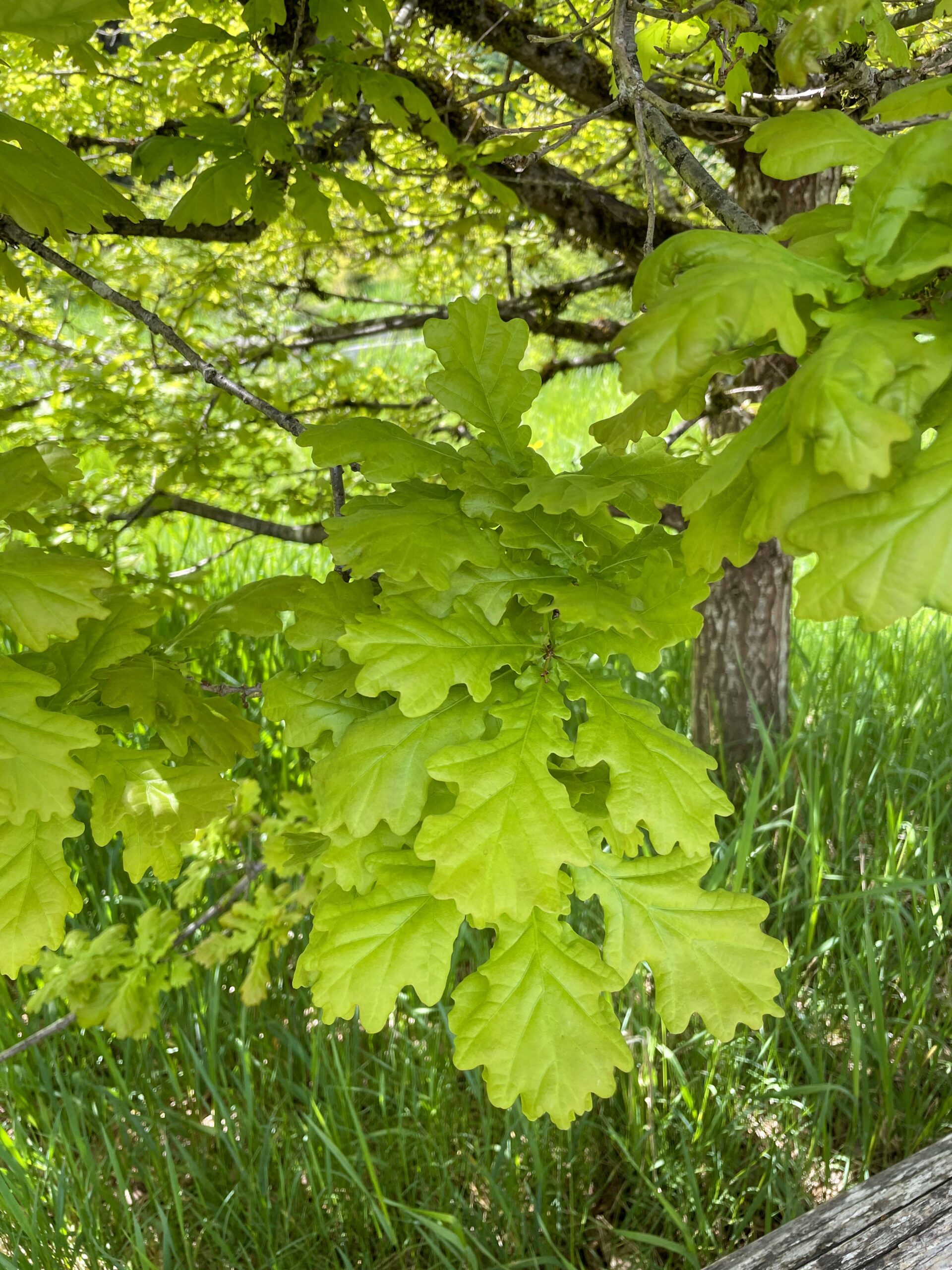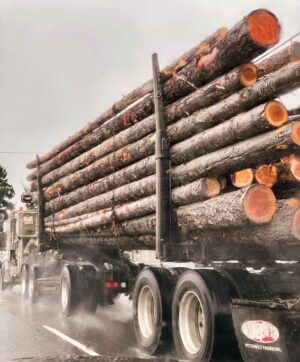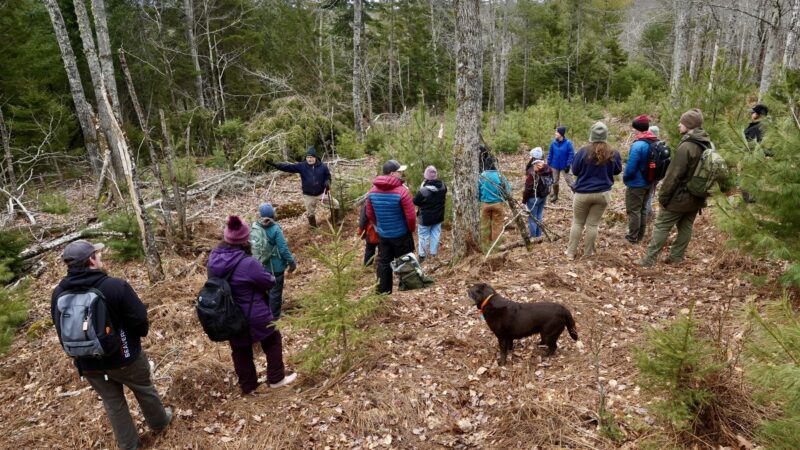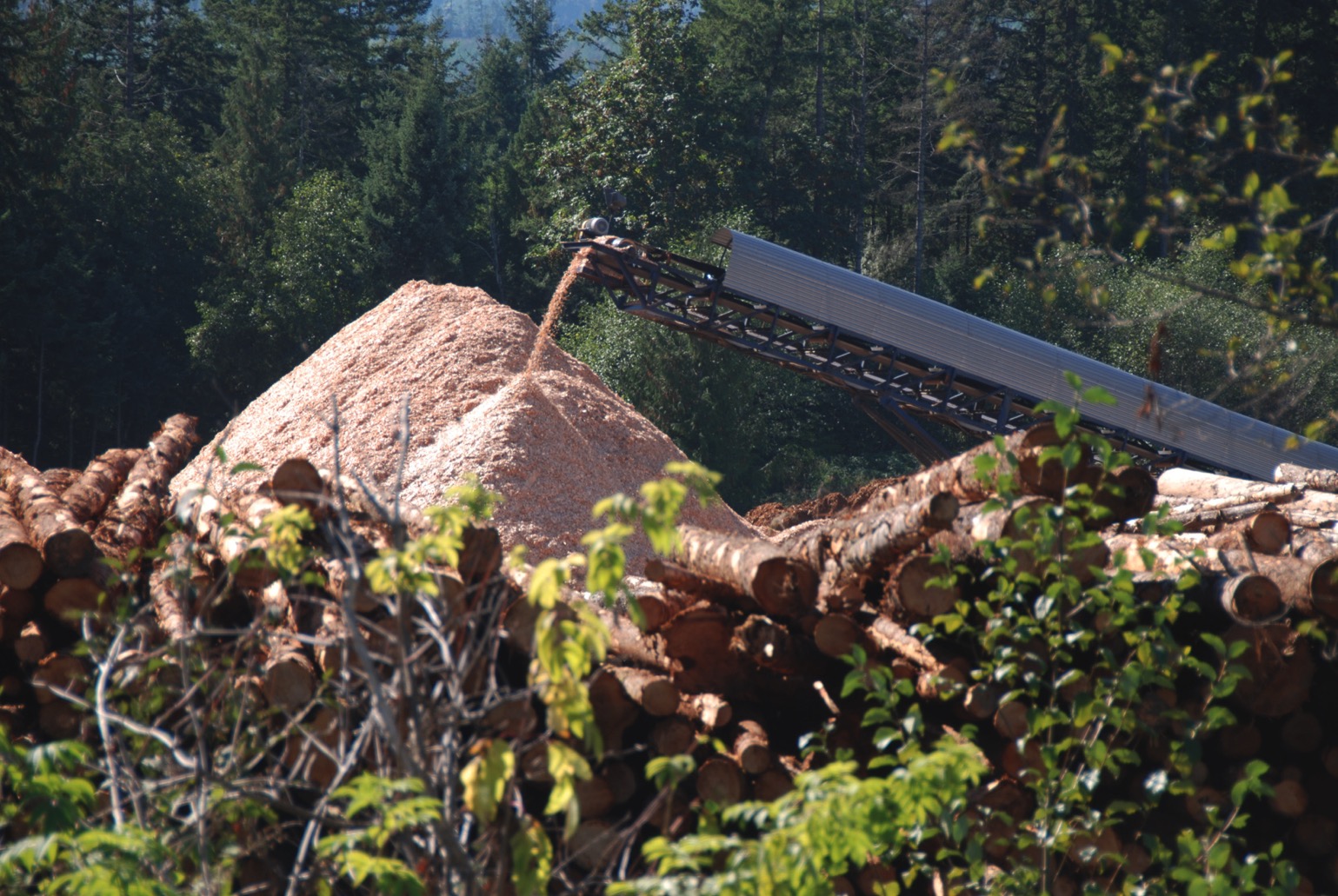 HENDERSON, Texas — Henderson’s West Fraser recently celebrated the long-deserved retirement of their General Manager, Raymond Mitchell, after 51 hard-working years with the still-growing company. The company threw a blow-out bash for Mitchell. Local officials, current and former employees, and West Fraser upper management gathered on the expanded facility to celebrate Mitchell and his many accomplishments throughout his time with the company. Mitchell started his decades long tenure in the lumber industry at the ripe age of 19. He has held the title of Mill Manager since 1999.
HENDERSON, Texas — Henderson’s West Fraser recently celebrated the long-deserved retirement of their General Manager, Raymond Mitchell, after 51 hard-working years with the still-growing company. The company threw a blow-out bash for Mitchell. Local officials, current and former employees, and West Fraser upper management gathered on the expanded facility to celebrate Mitchell and his many accomplishments throughout his time with the company. Mitchell started his decades long tenure in the lumber industry at the ripe age of 19. He has held the title of Mill Manager since 1999.


 An American timber business owner who supports Donald Trump is grappling with unsold inventory and shrinking cash flow due to the ongoing trade war, as Washington’s punitive tariffs weigh heavily on his operations and push him to seek alternatives to the Chinese market. Brandon Arbogast, the owner of Valley Log Sales in Timberville, Virginia, has spent decades in the lumber industry, exporting premium Virginia timber, primarily to China. …Sitting on 120,000 to 130,000 U.S. dollars’ worth of unsold wood, Arbogast is contemplating selling some of his land to maintain cash flow. …As a self-identified Trump supporter, Arbogast is willing to endure the hardship, hoping that a resolution to the trade dispute will eventually bring relief. For now, his premium walnut logs, which are typically transformed into furniture, flooring, and kitchen cabinets, remain idle.
An American timber business owner who supports Donald Trump is grappling with unsold inventory and shrinking cash flow due to the ongoing trade war, as Washington’s punitive tariffs weigh heavily on his operations and push him to seek alternatives to the Chinese market. Brandon Arbogast, the owner of Valley Log Sales in Timberville, Virginia, has spent decades in the lumber industry, exporting premium Virginia timber, primarily to China. …Sitting on 120,000 to 130,000 U.S. dollars’ worth of unsold wood, Arbogast is contemplating selling some of his land to maintain cash flow. …As a self-identified Trump supporter, Arbogast is willing to endure the hardship, hoping that a resolution to the trade dispute will eventually bring relief. For now, his premium walnut logs, which are typically transformed into furniture, flooring, and kitchen cabinets, remain idle. MINNESOTA — The Beltrami County Work Session held on May 6, 2025… featured discussions on a proposed $137 million investment to upgrade the West Fraser facility, which is crucial for both the mill’s future and the local economy.Jeremy Buck from West Fraser presented plans to modernize the mill, which has been operational since 1981 and still uses much of its original equipment. The proposed renovations aim to enhance energy efficiency and reduce environmental impact, with the potential to preserve approximately 32 direct jobs and support an estimated 500 indirect jobs in the community. The company has applied for assistance from the Minnesota Department of Employment and Economic Development (DEED) through the Job Creation Fund, which requires a resolution of support from the county. …The next steps will involve further discussions on the budget and the resolution to support West Fraser’s investment.
MINNESOTA — The Beltrami County Work Session held on May 6, 2025… featured discussions on a proposed $137 million investment to upgrade the West Fraser facility, which is crucial for both the mill’s future and the local economy.Jeremy Buck from West Fraser presented plans to modernize the mill, which has been operational since 1981 and still uses much of its original equipment. The proposed renovations aim to enhance energy efficiency and reduce environmental impact, with the potential to preserve approximately 32 direct jobs and support an estimated 500 indirect jobs in the community. The company has applied for assistance from the Minnesota Department of Employment and Economic Development (DEED) through the Job Creation Fund, which requires a resolution of support from the county. …The next steps will involve further discussions on the budget and the resolution to support West Fraser’s investment.
 A federal judge in Jackson, Mississippi, issued an order April 28 allowing a lawsuit by a newspaper publisher and lumber company against the Mississippi River Commission (MRC) to proceed. The lawsuit alleges a lack of transparency in meetings. The suit was originally filed in September 2024. Emmerich Newspapers Inc., which publishes dozens of publications across Mississippi, Louisiana and Arkansas, sued the MRC over what it claimed were secret meetings where proper records were not kept and the public was not notified or admitted. Emmerich was joined as plaintiff by a lumber company that manages hundreds of acres alongside the Mississippi River. The lumber company claims the Corps of Engineers’ decisions on flood control, informed by advice from the MRC, adversely affect its properties. The judge’s decision allows the lawsuit to proceed without ruling on the merits of the allegations.
A federal judge in Jackson, Mississippi, issued an order April 28 allowing a lawsuit by a newspaper publisher and lumber company against the Mississippi River Commission (MRC) to proceed. The lawsuit alleges a lack of transparency in meetings. The suit was originally filed in September 2024. Emmerich Newspapers Inc., which publishes dozens of publications across Mississippi, Louisiana and Arkansas, sued the MRC over what it claimed were secret meetings where proper records were not kept and the public was not notified or admitted. Emmerich was joined as plaintiff by a lumber company that manages hundreds of acres alongside the Mississippi River. The lumber company claims the Corps of Engineers’ decisions on flood control, informed by advice from the MRC, adversely affect its properties. The judge’s decision allows the lawsuit to proceed without ruling on the merits of the allegations.








 MARYLAND — After five years of work and many interim steps, Maryland became the sixth US state to pass extended producer responsibility legislation for paper and packaging, continuing the policy’s evolution in the country. Sent to the governor on April 7, SB 901 would direct a producer responsibility organization to set goals for post-consumer recycled content, recyclability, recycling and reuse rates, source reduction, composting rates and contamination reduction. However, it also builds on newer elements, such as a phased-in approach to reimbursement, seen last year in Minnesota’s law. …The American Forest and Paper Association has called the bill “misguided.” “EPR programs are helpful for materials that don’t have strong end markets or aren’t highly recycled,” the association wrote. “Paper is a highly recycled material with strong end markets.” …Any EPR program must fully and fairly credit our early and voluntary actions to increase recycling in Maryland and across the country.”
MARYLAND — After five years of work and many interim steps, Maryland became the sixth US state to pass extended producer responsibility legislation for paper and packaging, continuing the policy’s evolution in the country. Sent to the governor on April 7, SB 901 would direct a producer responsibility organization to set goals for post-consumer recycled content, recyclability, recycling and reuse rates, source reduction, composting rates and contamination reduction. However, it also builds on newer elements, such as a phased-in approach to reimbursement, seen last year in Minnesota’s law. …The American Forest and Paper Association has called the bill “misguided.” “EPR programs are helpful for materials that don’t have strong end markets or aren’t highly recycled,” the association wrote. “Paper is a highly recycled material with strong end markets.” …Any EPR program must fully and fairly credit our early and voluntary actions to increase recycling in Maryland and across the country.”


 WASHINGTON – U.S. Sens. Mark R. Warner and Tim Kaine (both D-VA) introduced two bills to protect wilderness in Rockingham, Augusta, Highland, and Bath counties. “We are lucky to have such beautiful natural resources in Virginia, and we need to do more to ensure that these lands are protected for future generations,” said the senators. “We’re proud to introduce this legislation to preserve wilderness in Rockingham, Augusta, Highland, and Bath counties, protect wildlife, and support local economies that depend on tourism and outdoor recreation.” These additions were recommended by the U.S. Forest Service in 2014 and endorsed by members of the George Washington National Forest Stakeholder Collaborative, a group of forest users who work together on acceptable locations in the George Washington National Forest for wilderness, timber harvest, trails, and other uses. In 2023, the tourism economy directly employed 7,562 people and generated $842.5 million in expenditures in [these areas].
WASHINGTON – U.S. Sens. Mark R. Warner and Tim Kaine (both D-VA) introduced two bills to protect wilderness in Rockingham, Augusta, Highland, and Bath counties. “We are lucky to have such beautiful natural resources in Virginia, and we need to do more to ensure that these lands are protected for future generations,” said the senators. “We’re proud to introduce this legislation to preserve wilderness in Rockingham, Augusta, Highland, and Bath counties, protect wildlife, and support local economies that depend on tourism and outdoor recreation.” These additions were recommended by the U.S. Forest Service in 2014 and endorsed by members of the George Washington National Forest Stakeholder Collaborative, a group of forest users who work together on acceptable locations in the George Washington National Forest for wilderness, timber harvest, trails, and other uses. In 2023, the tourism economy directly employed 7,562 people and generated $842.5 million in expenditures in [these areas]. UNIVERSITY PARK, Pa. — A debate continues among scientists over whether tree composition in forests in eastern North American historically have been influenced more by climate or by cultural burning, which is the intentional and controlled use of fire by Indigenous people to manage their environment. A new study of southern New England forests … lends credence to the cultural burning hypothesis, suggesting that fire-tolerant vegetation — oak, hickory and pine — were significantly more abundant near Indigenous settlements over the last 5,000 years. “The results of this study strongly suggest that Native Americans extensively use fire and other disturbances such as land clearing for villages, agriculture and trails, and both directly and indirectly promoted fire-adapted trees,” said study co-author Marc Abrams, Penn State professor emeritus. “These trees were very important to the Native American diet because of the mast — nuts and acorns — they produced.”
UNIVERSITY PARK, Pa. — A debate continues among scientists over whether tree composition in forests in eastern North American historically have been influenced more by climate or by cultural burning, which is the intentional and controlled use of fire by Indigenous people to manage their environment. A new study of southern New England forests … lends credence to the cultural burning hypothesis, suggesting that fire-tolerant vegetation — oak, hickory and pine — were significantly more abundant near Indigenous settlements over the last 5,000 years. “The results of this study strongly suggest that Native Americans extensively use fire and other disturbances such as land clearing for villages, agriculture and trails, and both directly and indirectly promoted fire-adapted trees,” said study co-author Marc Abrams, Penn State professor emeritus. “These trees were very important to the Native American diet because of the mast — nuts and acorns — they produced.”
 NEW HAMPSHIRE yield tax on timber, often called the “timber tax,” was established in 1949 and has been locally collected to offset property taxes ever since. …The yield tax on timber has been an essential tool for promoting conservation, helping the timber industry, and stabilizing municipal revenues in heavily timbered towns. …The legislation would, “…encourage conservation of the forest resources of [New Hampshire] by releasing growing wood and timber from the yearly burden of local property taxes and substituting a yield tax….” The timber tax has been very effective achieving these goals… The current policy strikes an excellent balance between industry and conservation. There is a new government-promoted industry threatening New Hampshire’s timber industry, loggers, timber processors, and heavily timbered towns that depend on timber tax revenues. Carbon credits.
NEW HAMPSHIRE yield tax on timber, often called the “timber tax,” was established in 1949 and has been locally collected to offset property taxes ever since. …The yield tax on timber has been an essential tool for promoting conservation, helping the timber industry, and stabilizing municipal revenues in heavily timbered towns. …The legislation would, “…encourage conservation of the forest resources of [New Hampshire] by releasing growing wood and timber from the yearly burden of local property taxes and substituting a yield tax….” The timber tax has been very effective achieving these goals… The current policy strikes an excellent balance between industry and conservation. There is a new government-promoted industry threatening New Hampshire’s timber industry, loggers, timber processors, and heavily timbered towns that depend on timber tax revenues. Carbon credits.

 GRAND RAPIDS, Mich. —
GRAND RAPIDS, Mich. —  In Ocean County, the Jones Road Wildfire continues burning into its sixth day. Roads are now back open including Wells Mills Road. The command post sits at Wells Mills County Park. As of Sunday, over 15,000 acres have burned, and it is now 65% contained. Four structures were threatened as of Sunday. Evacuations have been 100% lifted for residents previously evacuated in Lacey and Ocean townships. Crews Sunday were working on hotspots and patrolling the fire perimeter.
In Ocean County, the Jones Road Wildfire continues burning into its sixth day. Roads are now back open including Wells Mills Road. The command post sits at Wells Mills County Park. As of Sunday, over 15,000 acres have burned, and it is now 65% contained. Four structures were threatened as of Sunday. Evacuations have been 100% lifted for residents previously evacuated in Lacey and Ocean townships. Crews Sunday were working on hotspots and patrolling the fire perimeter.